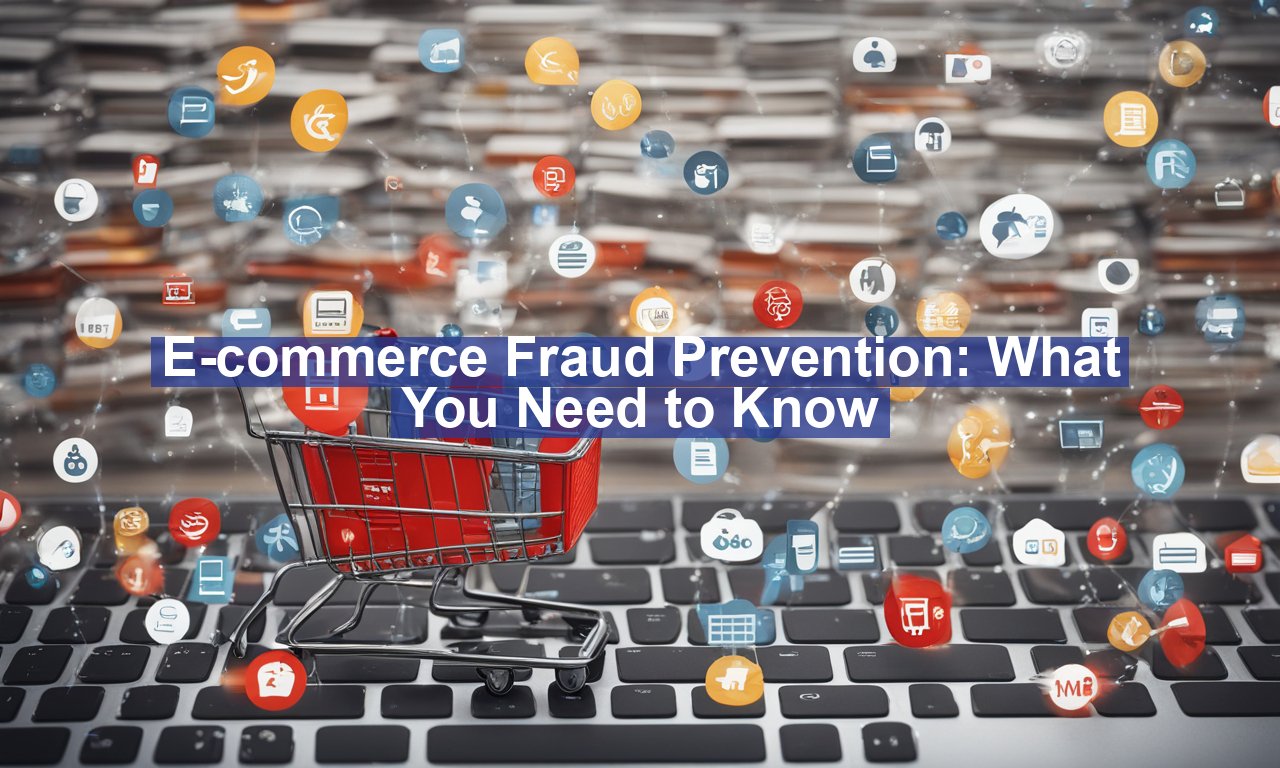E-commerce Fraud Prevention: What You Need to Know, in the ever-evolving world of electronic commerce, fraud prevention is more crucial than ever. Whether you’re a seasoned online entrepreneur or just getting started, understanding how to protect your online store from fraud can save you time, money, and a lot of headaches. This blog post delves into the nuances of e-commerce fraud prevention, answering common questions and offering authoritative advice to keep your business secure and thriving.
Why is E-commerce Fraud Prevention: What You Need to Know Important?
The significance of e-commerce fraud prevention can’t be overstated. With the surge in online shopping, fraudulent activities have skyrocketed, costing businesses billions each year. Electronic commerce fraud not only leads to financial loss but also harms the reputation of your brand. Therefore, implementing robust fraud prevention measures is essential for maintaining consumer trust and ensuring long-term success.
Common Types of E-commerce Fraud
Before diving into prevention strategies, it’s important to understand the different types of e-commerce fraud that could target your business. Here are some of the most common:
- Credit Card Fraud: The unauthorized usage of credit card information to make purchases.
- Chargeback Fraud: When a customer makes a purchase and then disputes the charge to get a refund while keeping the product.
- Account Takeover: Hackers gain access to a user’s account and use stored payment information to make unauthorized purchases.
- Refund Fraud: Fraudsters request a return for a product they never purchased or received.
How to Prevent E-commerce Fraud
Now that you’re aware of common fraud types, let’s look at effective strategies to safeguard your e-commerce business.
Implement Strong Authentication Methods
One of the most efficient ways to prevent fraud is with implementing powerful authentication measures. Using two-factor authentication (2FA) is a great place to start. This adds a layer of safety by requiring a second form of identification beyond just a password. For more information on what 2FA is and how it works, this guide from CSO is a great resource.
Utilize Fraud Detection Tools
Fraud detection tools can be incredibly valuable. These tools use machine learning and analytics to recognize suspicious activity. Services like Riskified and Signifyd offer comprehensive solutions to identify and prevent fraudulent transactions before they can do damage.
Monitor and Analyze Transactions
Regularly monitoring and analyzing transactions can help identify patterns and detect anomalies. Set-up alerts for transactions that fit suspicious profiles or exceed certain thresholds. This proactive approach allows you to act quickly and mitigate potential risks.
Educate Your Customers
It’s also important to educate your customers about common fraud tactics and how they can protect themselves. Encourage them to create strong passwords and avoid sharing personal information over unsecured channels. By empowering your customers to be vigilant, you create an additional line of defense against fraud.
Stay Informed About the Latest Fraud Trends
Fraudsters are constantly evolving their tactics, so it’s crucial to stay informed about the latest trends & techniques. Subscribing to industry newsletters or following relevant publications can provide timely updates and important insights. For example, The Journal of Cyber Policy offers comprehensive coverage on cybersecurity issues, including the latest in fraud prevention strategies.
Regular Security Audits
Schedule regular safety audits to evaluate the effectiveness of your fraud prevention measures. These audits help identify vulnerabilities and areas for improvement, ensuring your systems remain robust and capable of defending against emerging threats.
Best Practices for Fraud Prevention
Here are some additional best practices to help bolster your e-commerce fraud prevention efforts:
- Encrypt Sensitive Data: Always encrypt sensitive customer information to prevent it from being intercepted by hackers.
- Use Secure Connections: Ensure your website uses HTTPS to provide a secure connection for online transactions.
- Limit Access to sensorial Information: Restrict access to sensitive data to only those employees who need it to perform their jobs.
- Regularly Update Software: Keep all your software, including e-commerce platforms and security tools, up-to-date with the latest patches.
Final Thoughts
Preventing e-commerce fraud is an ongoing process that requires a multifaceted approach. By understanding the different types of fraud, implementing strong security measures, and staying informed about the latest trends, you can significantly reduce the risk of fraudulent activity impacting your business. Remember, the goal is not just to combat fraud but to create a secure and trustworthy shopping environment for your customers.
For more in-depth information, you can check out resources like the FTC’s guide on data security for businesses.
Stay vigilant, stay informed, and keep your e-commerce space secure!


